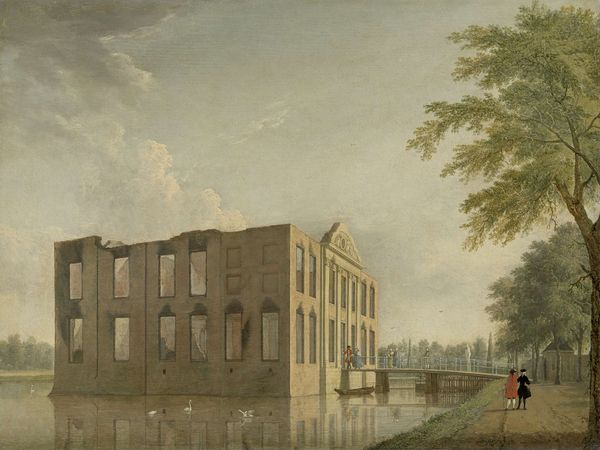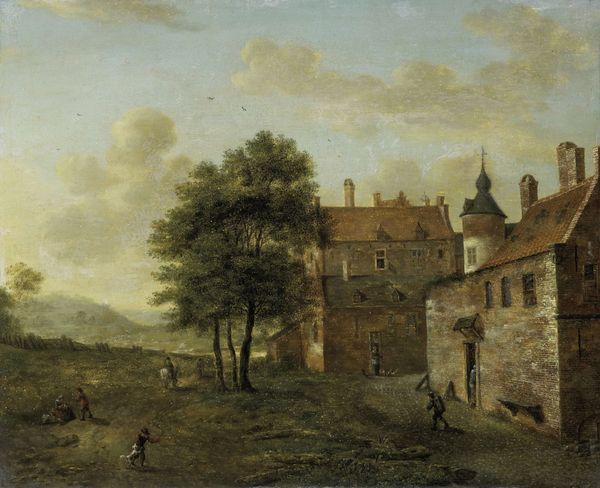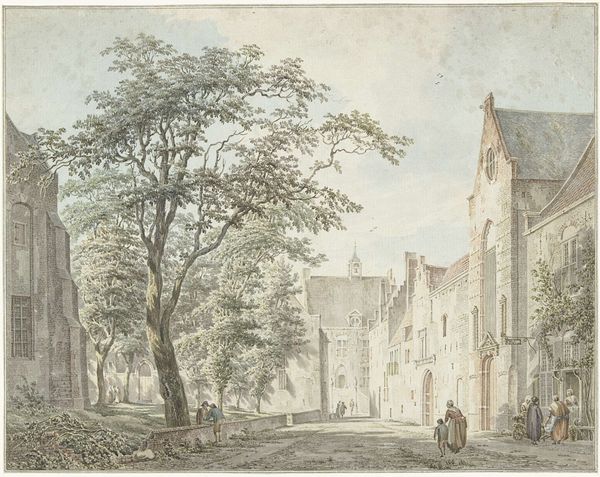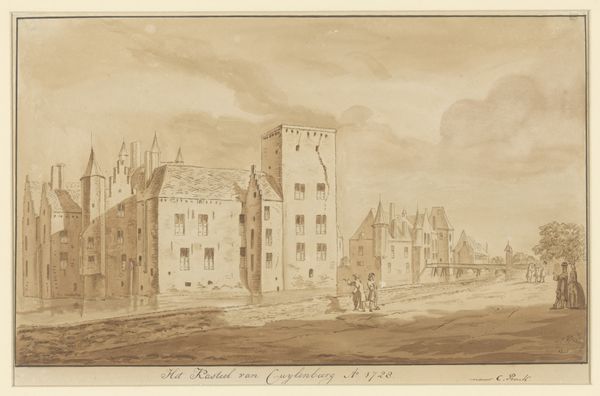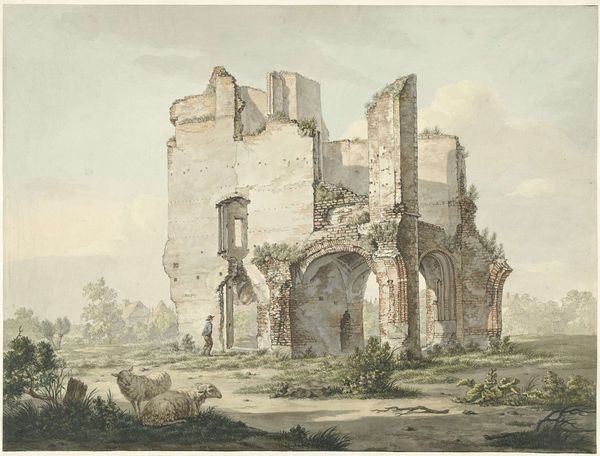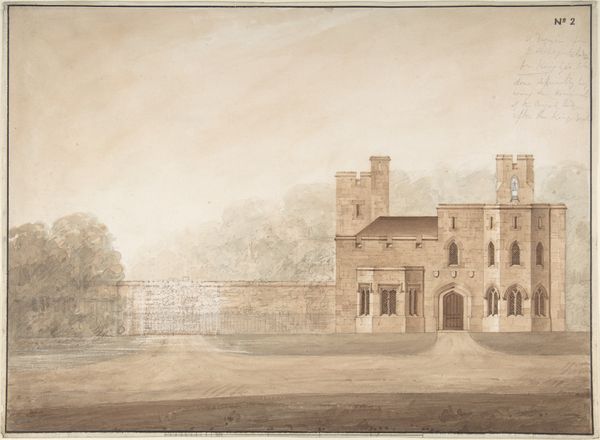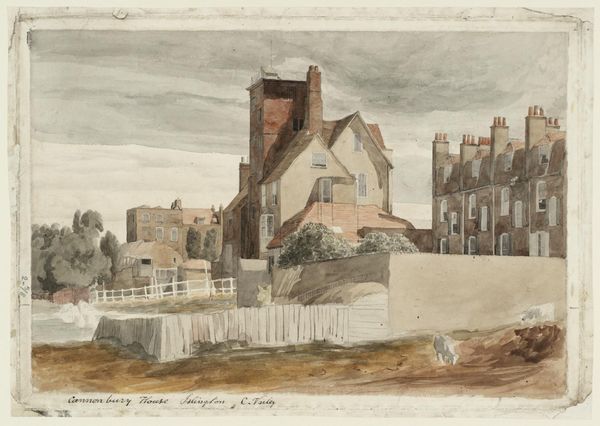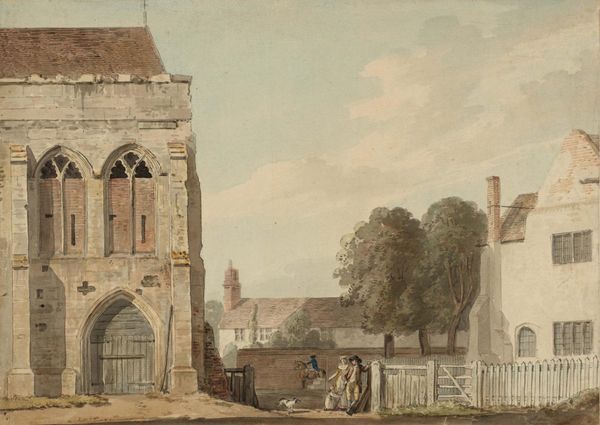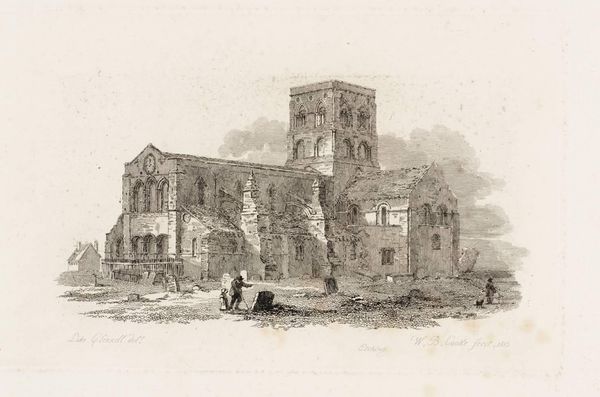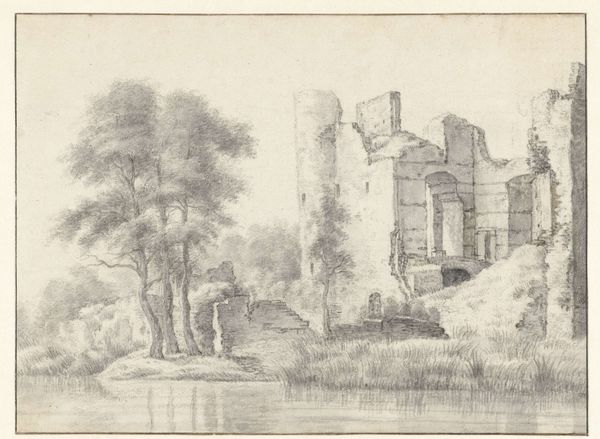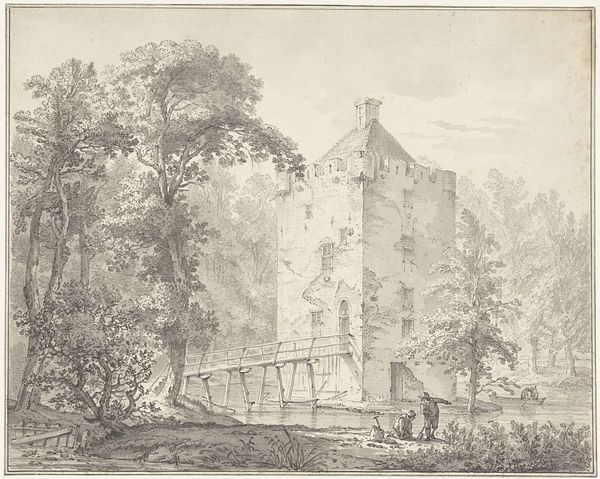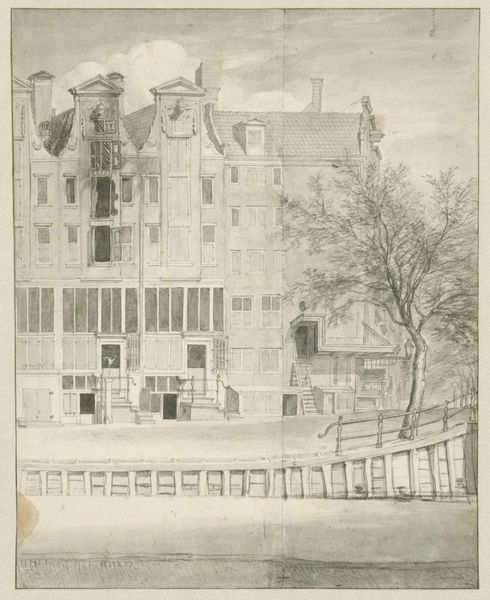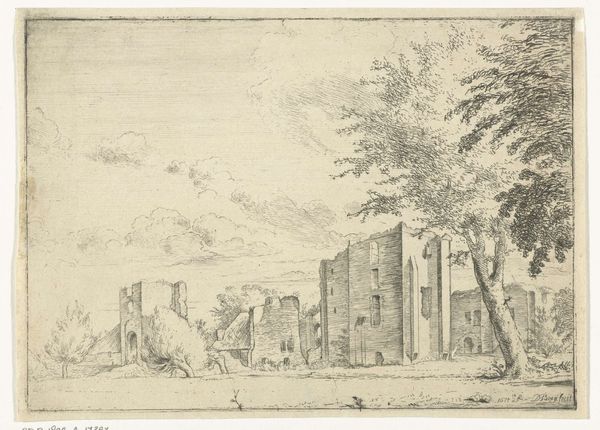
painting, oil-paint
#
baroque
#
painting
#
oil-paint
#
landscape
#
realism
Dimensions: height 39 cm, width 52 cm
Copyright: Rijks Museum: Open Domain
Editor: This is Jan ten Compe's "Rear View of Berckenrode Castle in Heemstede after the Fire," painted in 1747 using oil paint. The subject matter is the ruins of a castle. I'm immediately struck by the somewhat detached, almost clinical way the destruction is depicted. It’s like viewing an architectural autopsy. What do you see in this piece, particularly from a historical perspective? Curator: It is fascinating how Compe documented this disaster. Think of the socio-political implications of depicting such an elite symbol in ruins. Castles were, and still are, potent symbols of power and authority. Showing its demise highlights the vulnerability of the ruling class, perhaps a subtle commentary on shifting societal structures? Editor: So, the painting may carry a meaning beyond just documenting the fire's aftermath? Curator: Exactly. In the 18th century, the wealthy class were very focused on their status, castles such as this reflected their wealth and the strength of their family lineage. It might signal a societal unease or perhaps even foreshadow coming change and instability. Also, who commissioned it? Why? Where was it displayed, and to whom? Editor: Those are important questions. Do you think the seemingly detached, almost documentary style reinforces the subversive element? Curator: Absolutely. By presenting the scene with such clarity and apparent neutrality, Compe avoids overtly editorializing, allowing the viewer to come to their own conclusions about the event and its implications. It subtly invites questioning the status quo. What is really interesting is what we do not see. Is the disaster caused by war or nature, was there social unrest in the region? All of this forms how people viewed this piece at the time. Editor: I never considered how the context of its display would have been significant. I'm going to look up what was happening politically at that time! Thanks! Curator: Indeed. Considering a piece's socio-political landscape drastically alters its interpretation. It offers an entry point into the history and, subsequently, the cultural implications, from then to now.
Comments
rijksmuseum about 2 years ago
⋮
When William IV was elevated to stadtholder of Holland in 1747, the inhabitants of Berckenrode Castle held a celebration. The castle’s owner, Matthias Lestevenon, was an Orangist and would later become one of William IV’s advisers. The bonfire that was lit on 4 May set the castle ablaze and destroyed it. Lestevenon later rebuilt the castle in a new style.
Join the conversation
Join millions of artists and users on Artera today and experience the ultimate creative platform.
